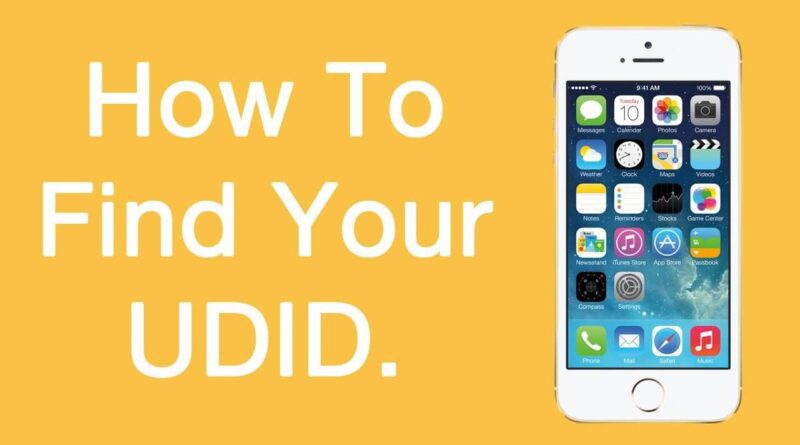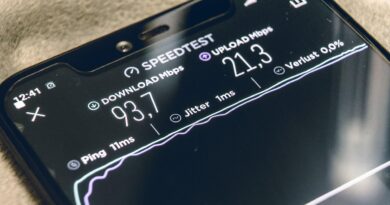How To Find UDID (Unique Device Identifier) on iPhone
Table of Contents
What is the iPhone UDID?
A UDID is an abbreviation utilized for Unique Device ID. It is an element of Apple iPhones and their different gadgets. It is a 40 digit series of numbers, that is useful in representing your device Every individual Apple gadget has its ID that is being gotten by Apple servers. When testing another versatile application on an Apple gadget we need a UDID from the iPhone, iPad, or iPod. An iOS device will just permit clients to introduce applications that are approved by Apple and are available in the App Store.
The thing we need to know about UDID
iOS application advancement requires that applications submitted to the App Store are agreeable with their measures. Along these lines, on the off chance to make an iPhone application, you should have the option to do iOS portable application testing. To test an application we produce, we have to enlist a gadget for an Apple developer account with the distinct UDID.
Exposedness of UDID
UDID is your device’s unique identity. It’s necessary for app development and testing. Some software may access the UDID of your device, which in turn can make your data vulnerable. Some software can collect your data with UDID. These data will be sent to databases to monitor /and supplement you with /the marketing content of your preferences. As this happens without your concern, it is advisable to be careful before choosing your software.
How To Find UDID on iPhone
You can learn about your UDID with several methods available. One of the most common methods is to identify the code with tunes. This method is simple and we can method use this approach for all versions of the device.
Step 1: Dispatch iTunes and associate your iPhone, iPad, or iPod (gadget).
Step 2: Under Devices, click on your device.
Step 3: Next snap on the ‘Serial Number’
Step 4: Now the serial number will be changed into UDID.
The above steps will answer questions like how to find UDID on iphone7 and other lower versions.
How To Find UDID on iPhone without iTunes
You can use macOS Catalina mac for finding out your UDID without the aid of iTunes. The following steps will brief on the methods of identifying your UDID.
Step 1: Locate the “Finder”
Step 2: Choose your iPhone through the sidebar.
Step 3: Select the ” General” option.
Step 4: Pick the text shown below.
Step 5: New dialog box with your UDID and serial number will appear.
Also Read: 7 Important Steps to Follow before Coding for an iOS app
How To Find UDID on iPhone6
There are several methods available for identifying the unique device identifier. One of the methods is to identify with the aid of the iTunes backup file. You can use these methods for all lower versions of devices. The steps describing below can explain the procedure for obtaining UDID.
Step 1: Locate and select the “Go” option in the menu bar.

Step 2: Enable the “Option” key available

Step 3: Select the “library” on the options available.

Step 4: Enable the “Application support” in the library panel.

Step 5: Pick the “mobile sync” option.

Step 6: Expand the “Backup” folder to visualize your UDID.

Using the System Report
Your computer will have a system report that contains valuable pieces of information about your device. This report can be useful in identifying your UDID. You can proceed with the UDID identification with the interactive steps given below.
Step 1: Link your iOS device with mac
Step 2: Pick the Apple menu and choose “Apple this mac” option
Step 3: Choose the ” System report” tab available.
Step 4: Select the “USB” icon available in the hardware section.
Step 5: Choose your device in the expanded tab.
Step 6: Locate the serial number available which represents the UDID of your device.

How To Find UDID On iPhone 7 With Registry
The registry will have entries for all your distinct IDs. This entry can be useful in identifying the UDID of your device. Steps can below explains the method of picking up your device ID.
Step 1: Invoke the run tab by pressing Window and R key together.
Step 2: Input “Regedit” in the Run tab.
Step 3: Choose the “HKEY_LOCAL_MACHINE” folder in the registry list.
Step 4: Locate and select the “system” folder.
Step 5: Pick the “current control set” folder.
Step 6: Avail the Enum folder and expand it.
Step 7: Expand the “VID_….” folder to identify your UDID.

Folders with UDID as their name will be available in the “VID_…..” folder. You can rename and copy them for your usage.
Video source: youtube.com
Summing Up
UDIDs are unique identities of your device which can be useful in-app testing. UDID access software can track your activities and can access your data. So, it is advisable to know your unique ID. Identifying the UDID is always a difficult task for us as the method differs from the device. We hope this brief has somehow enhanced your familiarity with UDID. Enjoy using the distinct device code wisely and have faultless access.
Faqs
Is it safe to give a UDID number?
It depends upon the trust you have with the software developer. The developer has to register UDID with Apple for developing and testing applications for you. So, they may request access to your unique ID. As some software can access your data with UDID, you should be cautious to disclose your ID.
Can I find my UDID without iTunes?
The unique identification number of all Apple devices can be found by using iTunes. However, there are several methods available to discover UDID. The UDID.io site can reveal your distinct ID easily.
Is the iPhone UDID the same as a serial number?
All Apple iPhones will have a 40 digit unique identification number which can be useful in application development and testing. This is a series of number that looks the same as a serial number but much harder to predict.




